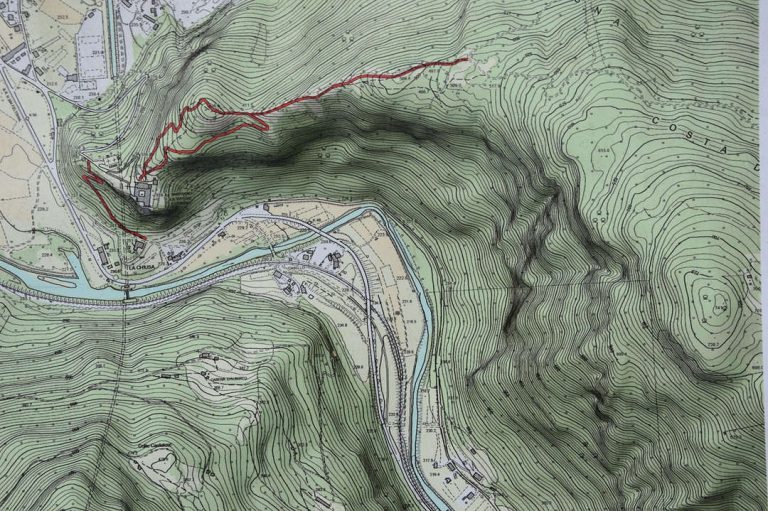What is Mine Reclamation? Benefits, Purpose, and Process
What is Mine Reclamation?
Mine reclamation is the process of restoring land that has been disturbed or degraded by mining activities, to return it to a safe, environmentally sound state that can be useful for future purposes.
This involves a series of carefully planned steps to mitigate the ecological impacts of mining, enhance land quality, and foster healthy ecosystems.
While reclamation activities occur after mining operations have ceased, planning begins well before a mine is permitted.
In the United States, mine reclamation has become a crucial aspect of modern mining practices, driven by the need to minimize environmental damage.
Effective reclamation addresses immediate ecological concerns and promotes long-term sustainability, reducing hazards associated with abandoned mines.
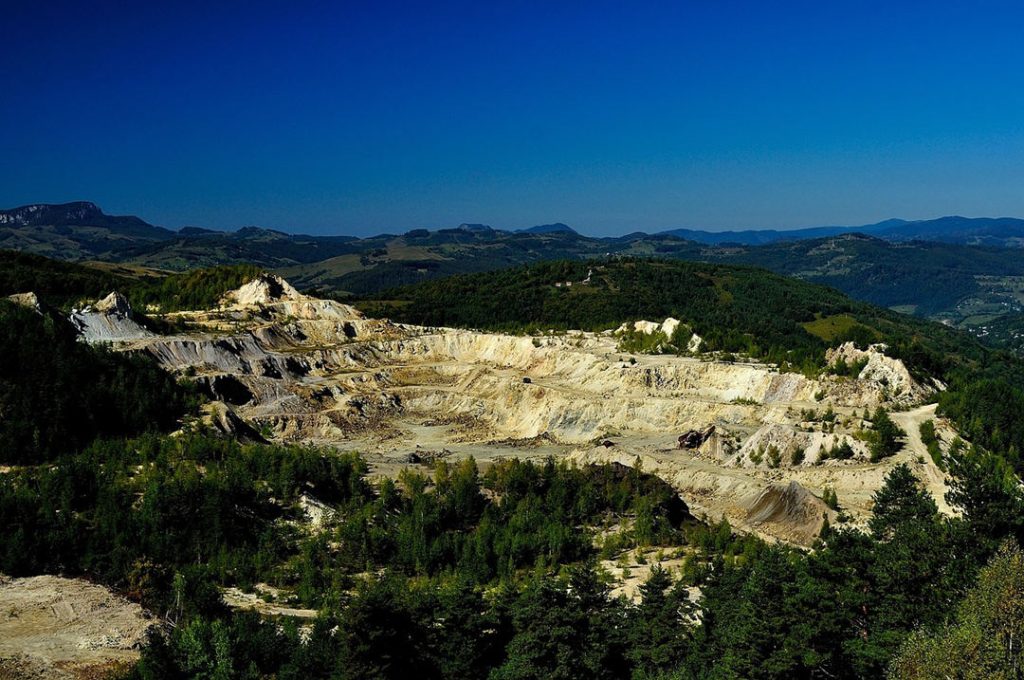
Historically, many abandoned mine sites received little to no reclamation due to a lack of regulations, leaving behind unsafe landscapes that posed environmental risks.
Awareness of these issues grew in the early 20th century, leading to the development of reclamation practices aimed at restoring mined lands and preventing future degradation.
Today, reclamation is recognized as a vital component of responsible mining, ensuring that the impacts of resource extraction are managed effectively.
Goal of Land Reclamation of Mining Sites
The primary goals of land reclamation following mining activities focus on restoring ecological balance, rehabilitating land for productive use, conserving biodiversity, and fostering economic development.
Ecological Restoration
One of the foremost objectives of mine reclamation is ecological restoration. This involves recreating or restoring productive ecosystems—such as forests, wetlands, or grasslands—on previously mined land.
By reintroducing native plant species and enhancing soil quality, reclamation efforts aim to revive the natural processes that support diverse ecosystems.
This restoration is crucial not only for the re-establishment of flora but also for rebuilding habitats that support various wildlife species, thereby promoting overall ecological health.

Land Use Rehabilitation
Reclaimed mining sites can be transformed into new land uses that benefit local communities and the environment.
This may include converting mined land into agricultural fields, parks, or recreational areas. Such rehabilitation allows for the productive use of previously disturbed land, contributing to local economies and enhancing the quality of life for residents.
For example, rehabilitated areas can provide space for community gatherings, outdoor activities, and even educational programs centered on environmental stewardship.
Biodiversity Conservation
Biodiversity conservation is a critical goal of land reclamation.
Mining often disrupts habitats and threatens plant and animal species. Through reclamation, efforts are made to protect and restore biodiversity in mined areas by creating suitable habitats that can support various species.
This includes planting native vegetation, which not only stabilizes soil but also provides food and shelter for wildlife.
By fostering diverse ecosystems, reclaimed sites can contribute to regional biodiversity, helping to mitigate the loss of species that often accompanies mining operations.
Economic Development
Lastly, land reclamation can stimulate economic development by generating new opportunities through the development of reclaimed land.
This includes the potential extraction of valuable resources, such as timber from restored forests or crops from rehabilitated agricultural land.
Moreover, transformed sites can attract tourism and recreational activities, providing economic benefits to local communities.
By creating productive landscapes, reclamation efforts can contribute to sustainable economic growth while ensuring that environmental considerations are prioritized.
Reclamation Methods for Different Mine Types
Mine reclamation can be broadly categorized into two main types based on the mining operation: surface mining and underground mining. Each type presents unique challenges and requires specific reclamation strategies to restore the land effectively.
Surface Mining Reclamation
Surface mining involves extracting minerals from the earth’s surface and includes methods such as strip mining, open-pit mining, and mountaintop removal.
Reclamation efforts for surface mining focus on restoring the landscape to a safe and stable condition, suitable for future use.
It includes strip mining, open-pit mining, and mountaintop removal. Reclamation efforts often involve grading, recontouring, topsoil replacement, and revegetation.
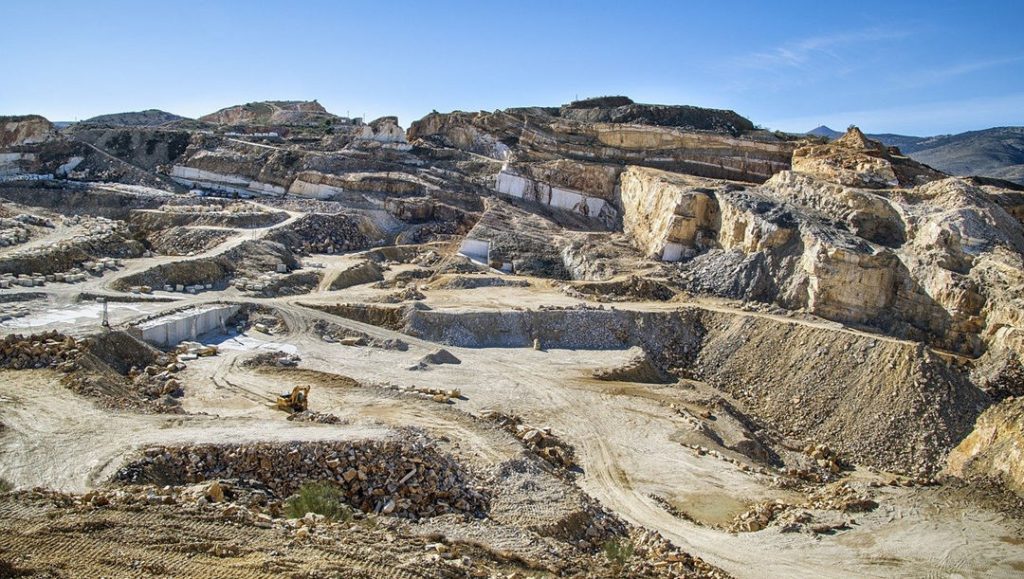
Underground Mining Reclamation
In contrast, underground mining reclamation addresses the complexities of limited access and the risk of subsidence.
Key steps include filling abandoned mine shafts to improve safety and sealing adits to prevent unauthorized access and manage water flow.
Acid mine drainage is a significant concern, and treatment methods, such as neutralization and constructed wetlands, are used to mitigate its impact on water quality.
Surface disturbances from underground mining also require attention, with grading and revegetation efforts ensuring the land is safe for future use.
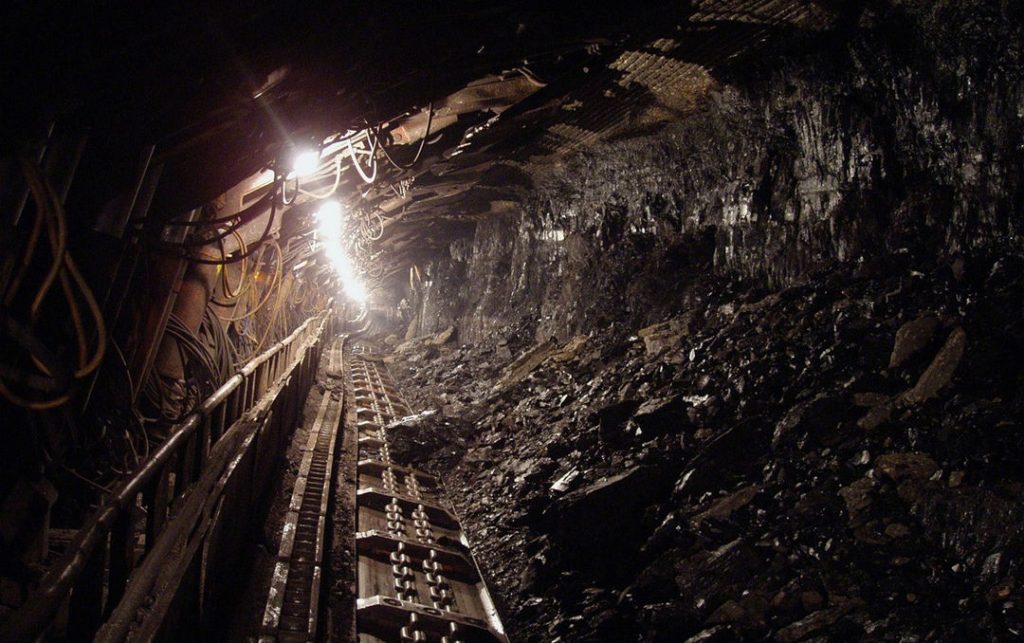
Reclamation Process
The reclamation process is a complex undertaking that requires careful planning, execution, and ongoing monitoring. Here's a more detailed breakdown of each step:
Site Planning
It begins with site planning and analysis, where the mined area is thoroughly assessed to understand its current condition. This includes evaluating soil composition, topography, hydrology, and ecological conditions.
An Environmental Impact Assessment (EIA) is performed to identify potential impacts on air, water, and land resources. The reclamation goals—such as ecological restoration, future land use, or biodiversity recovery—must be clearly defined to guide the entire process.
Additionally, ensuring regulatory compliance with all applicable federal, state, and local environmental laws is essential to avoid legal issues.
Contouring and Grading
In the contouring and grading phase, the land is regraded to restore its natural contours and create a stable landscape suitable for vegetation. This might involve removing spoil piles, filling depressions, and creating terraces or berms to control erosion.
Slope stabilization is crucial to prevent landslides and soil displacement, often requiring the construction of retaining walls or the use of erosion-resistant vegetation to anchor the slopes.
Placement of Topsoil or Substitute
Topsoil placement is a critical next step. During mining, topsoil is often stockpiled to preserve its nutrient content and structure. This stockpiled soil is then carefully reapplied to the graded land to provide a fertile base for vegetation growth.
If the original topsoil is unavailable or damaged, engineered soil mixtures or approved substitutes may be used to support plant growth. These substitutes must be carefully selected to mimic the properties of natural topsoil.
Revegetation
Revegetation begins with the selection of native plant species that are adapted to the local climate and soil conditions. The seeds are then cleaned, treated, and mixed with carrier materials to enhance germination rates.
Depending on the terrain and reclamation goals, planting methods such as broadcasting, seed drilling, or hand planting may be employed.
Mulching is applied afterward to help conserve soil moisture, suppress weed growth, and protect the soil from further erosion until the plants take root.
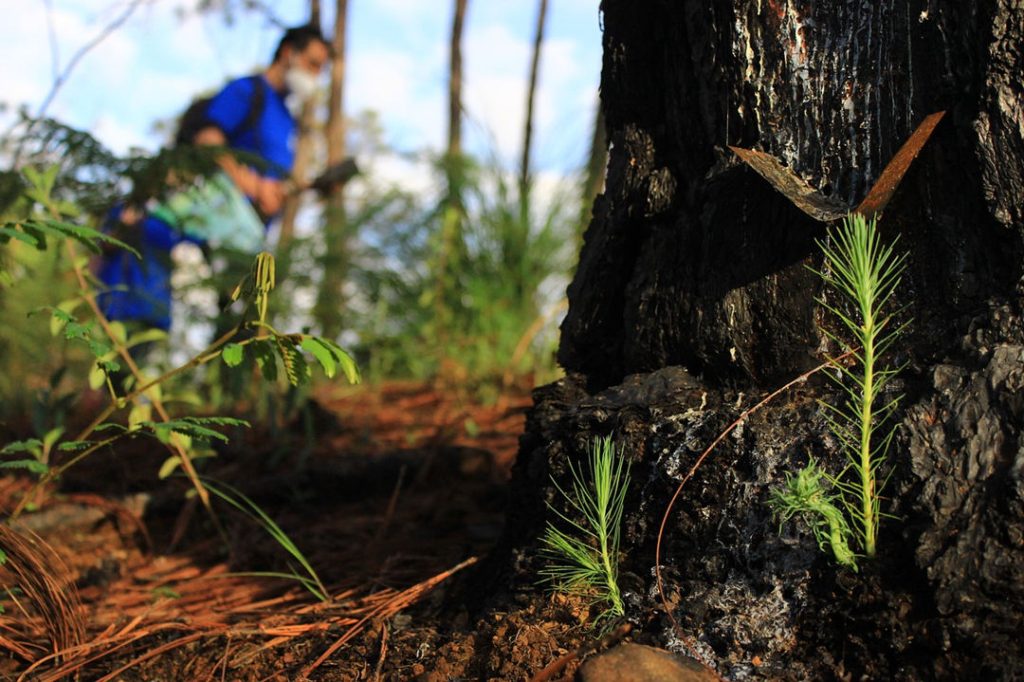
Erosion Control
To address erosion control, contouring is used to slow water runoff by shaping the land with terraces or contour lines. A dense vegetative cover helps bind the soil and reduce erosion.
Additional erosion control structures, such as check dams, silt fences, or sediment basins, are used to capture sediment before it reaches waterways, minimizing pollution risks.
Water Quality Management
Water quality management is essential, especially in areas affected by acid mine drainage (AMD). Treatment methods for AMD include passive systems like constructed wetlands or active systems such as treatment plants that neutralize acidity and remove harmful metals.
Sediment control measures are also implemented to prevent soil and sediment from contaminating nearby water bodies by directing runoff to sediment ponds.
Wildlife Habitat Restoration
In the wildlife habitat restoration phase, habitats are recreated by planting native trees, shrubs, and grasses that provide food and shelter for local wildlife. Artificial wetlands may also be created to support biodiversity. Ongoing wildlife monitoring ensures that habitat creation is effective and adjustments are made if certain species are struggling to establish.

Monitoring and Maintenance
Finally, monitoring and maintenance are continuous processes. Regular inspections assess the effectiveness of erosion control, vegetation growth, and water management strategies. Maintenance tasks include weed control, irrigation, and repairing damaged erosion control structures.
Adaptive management allows the reclamation plan to evolve based on monitoring results, ensuring long-term ecological stability and land rehabilitation success.
Reclamation Laws and Regulations
Reclamation laws and regulations vary widely across countries and regions, reflecting differences in mining practices, environmental priorities, and economic conditions.
Federal Laws and Regulations
In many countries, the federal government sets the foundational standards for mine reclamation through legislation that mandates specific reclamation practices. In the United States, for example, the following laws are critical:
- Surface Mining Control and Reclamation Act (SMCRA): Enacted in 1977, SMCRA is the principal law governing mine reclamation in the U.S. It applies mainly to coal mining operations and requires companies to restore the land to its original condition or a condition that supports a similar use. SMCRA mandates that mining companies post a reclamation bond before operations begin, ensuring that sufficient funds are available to complete the reclamation process, even if the company becomes insolvent. The law is administered by the Office of Surface Mining Reclamation and Enforcement (OSMRE), which oversees state-level implementation and provides technical assistance to ensure compliance.
- National Environmental Policy Act (NEPA): NEPA, passed in 1969, requires that any project involving federal lands or funding undergoes an environmental review process. For mining reclamation, this means preparing an Environmental Impact Statement (EIS) or Environmental Assessment (EA) to evaluate the potential environmental impacts of mining and reclamation activities, including how the land will be restored.
- Clean Water Act (CWA): Under the Clean Water Act, mining operations must obtain permits if their activities discharge pollutants into nearby water bodies. Reclamation plans must include strategies to protect water quality, such as controlling runoff, preventing sedimentation, and addressing acid mine drainage (AMD).
- Endangered Species Act (ESA): Mining operations must ensure that reclamation activities do not harm endangered or threatened species. The ESA mandates that reclamation plans include measures to restore habitats or create new ones to protect these species.
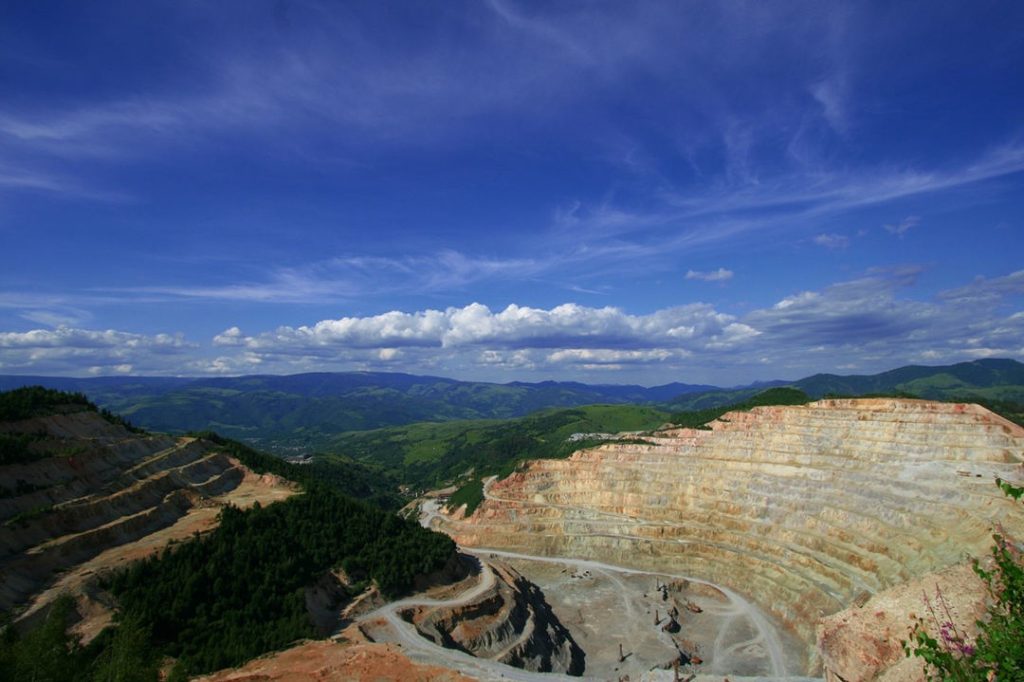
State and Local Regulations
While federal laws provide a broad framework, each state typically enforces its own set of reclamation regulations tailored to its unique ecological and geological conditions.
In states like Wyoming, West Virginia, and Kentucky, where coal mining is prevalent, reclamation laws are often stringent. In states with different types of mining, such as Nevada (gold) or Arizona (copper), the laws are adapted accordingly.
- State Regulatory Programs: States have their regulatory agencies that oversee mining reclamation, often in collaboration with federal agencies. For example, the Wyoming Department of Environmental Quality (DEQ) or the West Virginia Department of Environmental Protection (DEP) enforce state-specific reclamation rules. These agencies are responsible for issuing permits, conducting inspections, ensuring bond requirements are met, and approving reclamation plans before mining activities begin.
- Reclamation Bonds: Most state laws require companies to post a reclamation bond before mining can commence. This bond ensures that funds are available to complete reclamation if the company fails to fulfill its obligations. The bond is only released once the state verifies that reclamation has been satisfactorily completed according to the approved plan.
- Local Land Use Regulations: In addition to state laws, local governments may impose zoning restrictions or land use ordinances that dictate how reclaimed land can be used. These regulations ensure that the reclaimed land is suitable for future use, whether for agriculture, residential development, recreation, or wildlife habitats.
Abandoned Mine Land Reclamation Program
The Abandoned Mine Land (AML) Reclamation Program is a crucial initiative established to address the environmental and safety hazards posed by abandoned mines.
Funded by a per-ton fee on active coal production, the program has reclaimed thousands of mine sites across the U.S., mitigating dangers like open pits, toxic waste, unstable slopes, and polluted waterways. This has significantly reduced risks to nearby communities and ecosystems.
International Reclamation Standards
Globally, many countries have developed comprehensive reclamation laws aimed at protecting their natural resources from the impacts of mining. These laws vary widely depending on the country’s priorities, the type of mining involved, and the local ecosystem. Examples include:
- Canada: Canada’s mining reclamation regulations are robust, with each province enforcing its own reclamation laws. In British Columbia, for example, the Mines Act and Environmental Management Act require mining companies to prepare and submit detailed reclamation and closure plans. These plans must address issues such as soil erosion, water quality, and the restoration of ecosystems affected by mining.
- Australia: Australia is one of the world’s largest mining nations, and its reclamation laws reflect a strong commitment to environmental stewardship. The Environmental Protection Act 1994 and Mineral Resources Act 1989 in Queensland, for instance, require companies to rehabilitate land in a way that minimizes long-term environmental damage. The Mine Rehabilitation Fund (MRF) in Western Australia ensures that there are sufficient funds for reclamation, even if a company goes bankrupt.
- European Union: The EU’s Mining Waste Directive (2006/21/EC) sets strict standards for managing waste and rehabilitating mine sites. EU member states are required to ensure that mining companies restore land to an environmentally sound state, preventing long-term risks to public health and the environment.
Mining Reclamation Examples
Across the globe, there are several high-profile and successful examples of mine reclamation, where innovative techniques have restored environments to a state that supports wildlife, agriculture, or even tourism.
Eden Project, UK
The Eden Project in Cornwall, England, is one of the most renowned examples of successful mine reclamation. Built on a former china clay (kaolinite) mine, the site was transformed into a massive botanical garden, showcasing thousands of plant species from around the world in two large biomes.
The project aimed to restore the ecological balance while promoting education about sustainability and conservation. The Eden Project has become a global model for how post-mining landscapes can be repurposed for both environmental and educational uses.
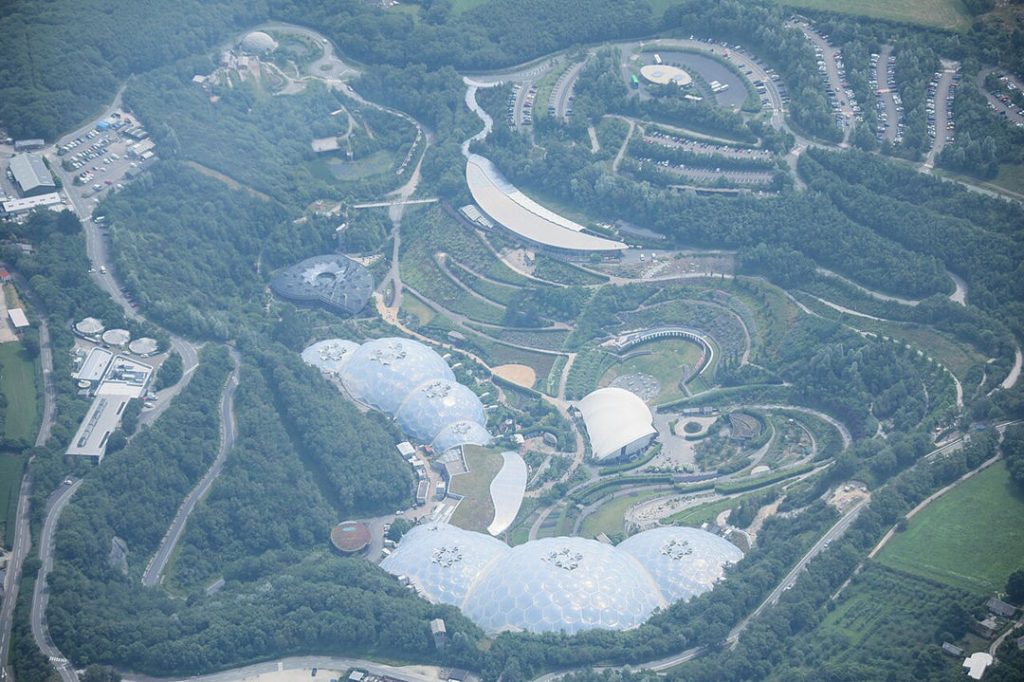
Aerial view of Eden project. Image credit from wikipedia.org
Forderbrücke Lusatia, Germany
The Lusatia Mine Reclamation in eastern Germany is an impressive effort to restore the landscape impacted by lignite (brown coal) mining. This vast region, once dominated by open-pit mines, has been undergoing reclamation since the mid-1990s.
The effort has transformed mining pits into artificial lakes, now forming the Lusatian Lake District, the largest artificial lake region in Europe. The reclamation not only restored ecological balance but also created opportunities for tourism and water sports.
BHP Billiton's Beenup Project, Australia
In Western Australia, BHP Billiton has successfully reclaimed the Beenup Mine, a mineral sand mining operation that closed in 1999 due to environmental and operational challenges.
The company's reclamation efforts focused on restoring natural wetlands, waterways, and native vegetation. The project serves as a model for balancing mining with environmental responsibility in highly sensitive ecosystems.
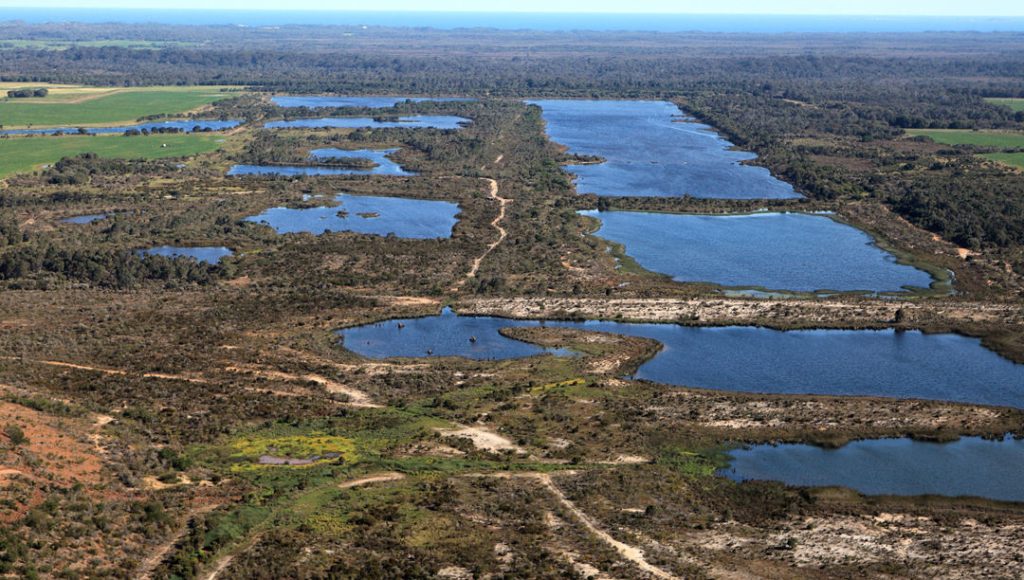
Image credit: syrinx.com
Sullivan Mine, Canada
The Sullivan Mine in British Columbia, Canada, was one of the world’s largest lead-zinc mines, operating for nearly a century before closing in 2001. The reclamation focused on stabilizing the tailings, preventing water pollution, and restoring the site’s natural vegetation.
The project has successfully turned the area into a wildlife habitat while maintaining safety measures to ensure that contaminants do not leak into surrounding ecosystems.
Chuquicamata Mine, Chile
The Chuquicamata Mine in Chile, one of the world’s largest copper mines, has undertaken massive reclamation efforts as part of its closure planning. The focus has been on reducing dust from tailings and mine waste, managing water resources, and reestablishing native flora.
The reclamation project is particularly significant because it is one of the largest open-pit mines in the world, and the project demonstrates how large-scale mining can still be environmentally managed.
Sishen Mine, South Africa
Sishen Mine is one of the largest open-pit iron ore mines in the world. Reclamation efforts at Sishen focus on restoring the arid landscape by planting native desert vegetation and stabilizing tailings and overburden. The mine uses innovative techniques like phytoremediation, where specific plants are used to absorb heavy metals and toxins from the soil.
This not only improves soil quality but also supports biodiversity. Ongoing reclamation work ensures that the land can eventually be used for agricultural purposes or as a wildlife reserve.
Bokaro Steel City Mines, India
In the coal-rich state of Jharkhand, India, several mines around Bokaro Steel City have been successfully reclaimed. Reclamation efforts have focused on filling open pits, reshaping the land, and introducing vegetation to prevent soil erosion.
Reclaimed land has been used for agricultural purposes and forestry, significantly benefiting the local economy. Additionally, artificial lakes and ponds created from the mine voids have supported local irrigation and fishing industries.
Berwind Lake, West Virginia
Berwind Lake was created through the reclamation of abandoned coal mines in the region. The West Virginia Division of Natural Resources collaborated with various agencies to convert the mined land into a recreational area.
The site now features a 600-acre lake that supports fishing, boating, and wildlife. The surrounding area has been reforested, creating a habitat for local flora and fauna while providing recreational opportunities for the community.
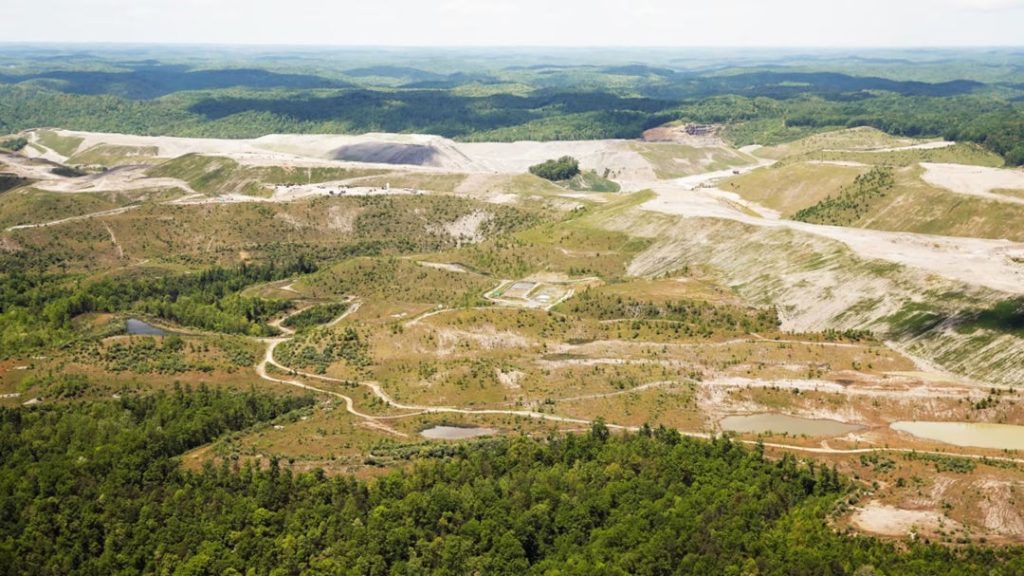
Image credit: voanews.com
Benefits and Challenges of Mine Reclamation
Mine reclamation is an essential practice aimed at restoring ecosystems affected by mining activities. While it offers substantial benefits, it also presents several challenges that need careful consideration.
Benefits of Mine Reclamation
- Environmental Restoration: Reclamation helps restore disrupted ecosystems by stabilizing soil, reforesting, and creating wetlands, which promotes biodiversity and enhances ecological resilience.
- Climate Change Mitigation: Reclaimed mine sites can act as carbon sinks, supporting vegetation that absorbs carbon dioxide, thus contributing to climate change mitigation efforts.
- Flood Control: By restoring natural drainage patterns and creating retention basins, reclamation can significantly reduce flooding risks in surrounding communities, enhancing water management.
- Aesthetic Improvement: Mine reclamation transforms visually degraded landscapes into attractive areas, boosting the aesthetic value of the region and improving the quality of life for residents.
- Community Revitalization: Reclamation projects can create recreational spaces like parks and hiking trails, fostering community pride and providing new opportunities for outdoor activities.
- Economic Opportunities: Repurposing former mine sites into commercial or industrial properties can generate new jobs and stimulate local economies through increased business activity and tourism.
- Public Health and Safety: By addressing hazardous materials and improving site stability, reclamation reduces health risks for nearby communities, promoting safer environments.
- Reduced Sinkholes: Reclamation involves backfilling excavated areas, regrading the land, and replanting vegetation to stabilize the soil. This strengthens the ground, improves drainage, and helps manage groundwater levels, reducing the risk of subsidence or sinkhole formation.
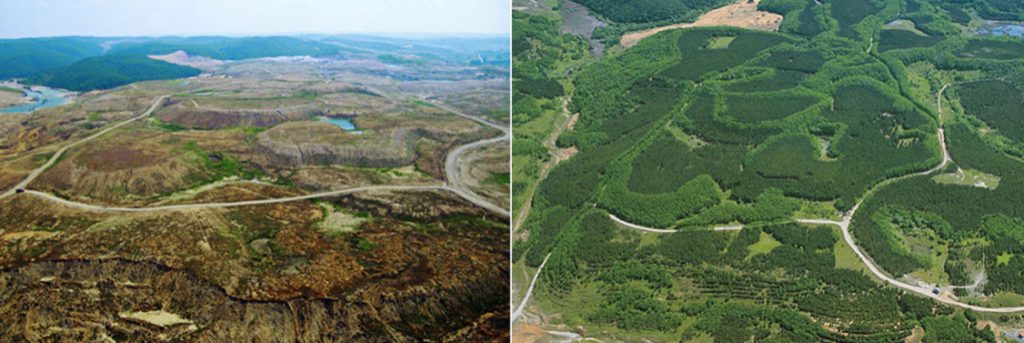
The Flambeau Mine: Before and after reclamation. Image source from Reclamation of Degraded Landscapes due to Opencast Mining by Nazan Kuter.
Challenges of Mine Reclamation
- Unforeseen Environmental Issues: Complications such as acid mine drainage and heavy metal contamination can complicate reclamation efforts and necessitate additional remediation measures.
- Technical Difficulties: Reclamation involves complex engineering tasks, including stabilizing slopes and restoring soil quality, which require specialized techniques and skilled personnel.
- Financial Constraints: The high costs associated with reclamation—covering planning, engineering, and monitoring—can strain resources. Securing sufficient funding is essential for successful outcomes.
- Regulatory and Permitting Hurdles: Navigating the regulatory landscape is challenging. Compliance with various laws and permits is critical to avoid legal issues, but it can be time-consuming and cumbersome.
- Long-Term Monitoring: Ongoing monitoring is crucial to ensure the success of reclamation efforts, which can pose logistical and financial challenges over time.
- Climate Impacts: Changes in climate, such as altered precipitation patterns and extreme weather events, can affect the success of revegetation and the stability of reclaimed sites.
- Invasive Species: The introduction of invasive species during reclamation can disrupt local ecosystems, highlighting the importance of careful species selection and ongoing management.
- Public Perception and Stakeholder Engagement: Building trust and engaging stakeholders—including local communities and environmental organizations—is vital for the success of reclamation projects, but can be challenging.
As you can see, mine reclamation is a complex and often challenging task. Traditional methods can be time-consuming, labor-intensive, and prone to inaccuracies. In recent years, drones like the CW-25E have emerged as a valuable tool, revolutionizing the way mine reclamation is conducted.
How Do Drones Make Mine Reclamation Easier?
Drones simplify mine reclamation by providing fast, accurate data to monitor material movement and predict reclamation timelines.
Accurate Timeline Prediction and Material Monitoring
Mining projects are uncertain in terms of how long they will remain active or how much material remains. Drones enable frequent aerial surveys, creating 3D models of sites to monitor progress, compare material movement over time, and calculate the remaining ore and waste. This precise tracking helps companies estimate when reclamation will start, how much backfill is needed, and flag potential problem areas.
For example, in the case of a Chinese mining services company, data from the CW-25E drone is regularly used to track the volume of material moved and predict when reclamation will begin. With precise data from drone flights, companies can create more accurate timelines for reclamation and identify any areas that may require extra attention or pose potential safety hazards.
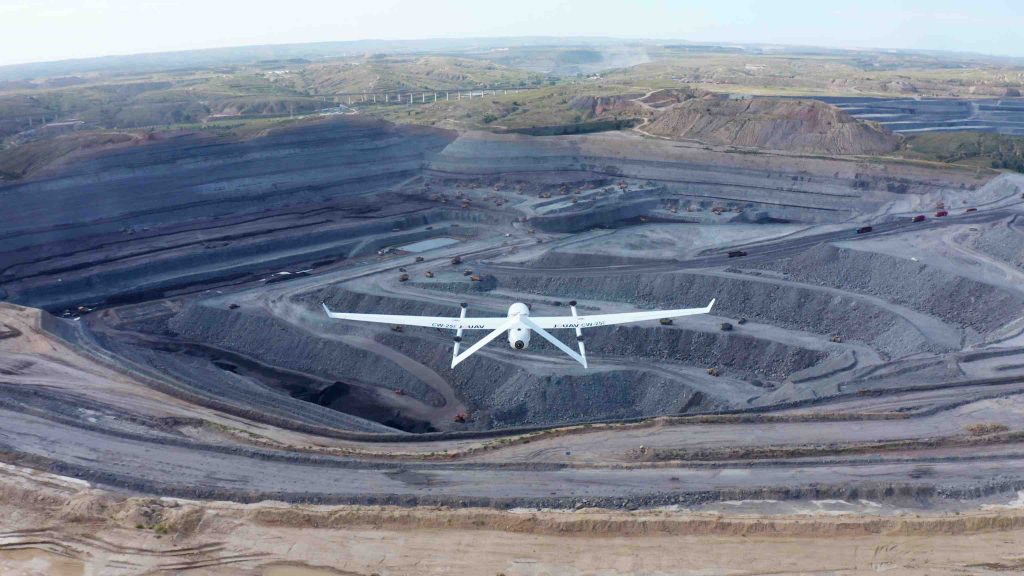
Baorixile Open Pit Mine adopted CW-25E UAV LiDAR technology. This boosted data collection efficiency by 6.5 times and improved overall in-house operations by almost 180%. Read More >>
Optimizing Blasting for Easier Reclamation
Proper blasting directly impacts reclamation success. Drones create accurate 3D models to inform better blasting plans by analyzing rock formations, face angles, and bench levels. This data minimizes environmental impact and ensures effective material extraction, making post-mining reclamation smoother. Post-blast surveys can also be conducted quickly to compare the extracted volume with planned targets.
Tailings and Waste Rock Management
Drones monitor the volume and stability of tailings and waste rock, ensuring they remain contained to prevent environmental risks. This real-time surveillance allows mining companies to detect issues early and make adjustments, helping maintain safe, compliant operations during reclamation.
Streamlining Stakeholder Collaboration
Reclamation requires input from multiple parties, including mining companies, regulators, contractors, and environmental groups. Drones provide unbiased 3D maps that can be shared across teams, ensuring all stakeholders access the same accurate data. Cloud-based platforms like Jocloud facilitate sharing, keeping everyone aligned and improving decision-making throughout the reclamation process.
FAQ
Is the Additional Expense of Mine Reclamation Necessary?
Yes, the additional expense of mine reclamation is generally considered necessary. While it can add to the overall cost of mining operations, the long-term benefits often outweigh the initial expense.
How Do Reclamation and Restoration Differ in Terms of Mining?
While the terms "reclamation" and "restoration" are sometimes used interchangeably, they have distinct meanings in the context of mining.
Reclamation typically involves returning a mined area to a state that is safe, stable, and environmentally sound. It may include measures like grading, revegetation, and erosion control.
While restoration is a more ambitious goal, aiming to recreate the original ecosystem or a similar one. Restoration often requires more extensive measures, such as reintroducing native species and restoring hydrological processes.
How Does Reclamation Protect the Environment Around a Mine?
Reclamation protects the surrounding environment through several mechanisms:
- Erosion Control: By regrading land and planting vegetation, reclamation minimizes soil erosion, which can lead to sedimentation in nearby water bodies.
- Pollution Mitigation: Reclamation often involves the management of waste materials, reducing the risk of toxic substances leaching into the soil and water systems.
- Habitat Restoration: Restored landscapes can provide habitats for wildlife, helping to maintain biodiversity and ecological integrity in the area.
- Water Management: Reclamation may include the establishment of wetlands or other natural filtration systems to improve water quality.
How Are Grass and Vegetation Planted in Mine Reclamation?
The planting of grass and vegetation in mine reclamation typically involves the following steps:
- Soil Preparation: The soil must be tested and prepared, which may include amending it to improve nutrient content and pH levels.
- Seed Selection: Native grasses and plants are often selected to promote local biodiversity and ecological stability. This selection considers the specific conditions of the reclaimed site.
- Seeding Methods: Seeding can be done through broadcasting (spreading seeds over the surface), drilling (planting seeds directly into the soil), or hydroseeding (using a slurry of seeds, mulch, and water to promote quick establishment).
- Maintenance: After planting, regular maintenance, such as watering, weed control, and monitoring for pests, is crucial for establishing healthy vegetation.
What Types of Reclamation Would Be Helpful to Reduce the Environmental Impacts of the Pebble Mine?
The Pebble Mine project in Alaska has raised numerous environmental concerns, particularly regarding its impact on salmon habitats. Several reclamation strategies could mitigate these impacts:
- Wetland Restoration: Implementing wetland reclamation can help filter pollutants and maintain water quality in nearby water bodies.
- Sustainable Landforms: Designing landforms that mimic natural topography can help maintain drainage patterns and reduce erosion.
- Native Vegetation Planting: Using native plants can improve habitat restoration and promote biodiversity in the reclaimed areas.
- Monitoring and Adaptive Management: Continuous environmental monitoring post-reclamation ensures that any emerging issues can be promptly addressed, allowing for adaptive management of the site.
How Can Topsoil Be Replaced in an Area That Has Been Strip-Mined?
Replacing topsoil in strip-mined areas involves several key steps:
- Soil Collection: Prior to mining, topsoil can be stripped and stored for later use. If not collected, topsoil must be sourced from nearby areas.
- Land Reshaping: After mining, the land is reshaped to its intended contour to promote proper drainage and stability.
- Topsoil Application: The collected or sourced topsoil is then evenly spread over the reshaped land to a suitable depth for plant growth.
- Soil Amendments: Fertilizers and organic matter may be added to enhance soil fertility and promote healthy vegetation growth.
- Monitoring and Maintenance: Ongoing monitoring ensures that the topsoil is stable and supports vegetation growth, while maintenance practices such as erosion control may be implemented as needed.
What is a Common Criticism of Mountaintop Removal Mine Reclamation?
A common criticism of mountaintop removal mine reclamation is that it does not fully restore the original landscape. This is because the process involves removing the tops of mountains and filling valleys with waste material, which can create a very different topography.
What Is a Mine Called Before Reclamation?
Before reclamation, a mine is typically referred to as an "active mine" or "operating mine." During this phase, mining activities are ongoing, and the site is experiencing the associated environmental impacts of extraction.
How Are E-Waste Recycling and Mine Reclamation Connected?
E-waste recycling and mine reclamation are interconnected through the concept of resource recovery. E-waste contains valuable metals and materials that can be extracted and reused, reducing the need for new mining. By recycling e-waste, we can recover metals like gold, silver, and copper, which helps to minimize the environmental impacts associated with traditional mining.
This connection emphasizes resource efficiency and reduces the overall demand for virgin mining. Additionally, some innovative reclamation techniques used for e-waste recycling can be applied to mine reclamation to recover valuable minerals from tailings and other mining waste.





